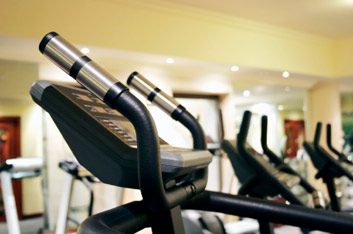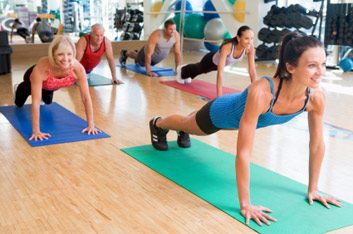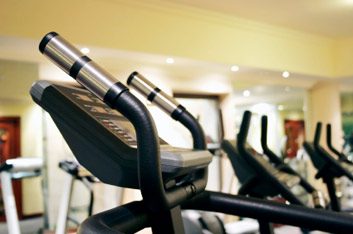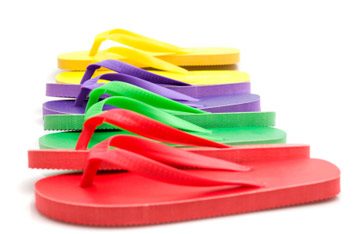
Protect yourself
You hit the gym to improve your health, but exercising in a workout facility could actually make you sick.
“The gym is a breading ground for germ sharing,” says Sherry Torkos, a pharmacist, fitness instructor and author of The Canadian Encyclopedia of Natural Medicine.
Many gyms are confined spaces with communal machines packed tightly together. “If there’s someone on the treadmill beside you and he’s huffing and puffing, chances are you’re going to be breathing in his air as well,” Torkos explains.
While there’s nothing to be done about your heavy-breathing neighbour (unfortunately), there are steps you can take to avoid picking up a virus or infection at the gym. Keep your workout routine on track with these tips.

Do some research
Before you join any fitness facility, it’s a good idea to ask what kind of cleaning practices are in place. For instance, Sari Nisker, co-owner of Spynga spinning and yoga studio in Toronto, has a regular cleaning routine in place.
“If you’ve borrowed a mat, the staff will clean it again, we have certain towels that we use to wipe down the exercise bikes and we wash our yoga blankets,” she says.
Don’t be afraid to ask the staff at your gym for specifics, like how often the equipment and facility are cleaned.

Bring your own equipment
While many gyms will take care to sanitize equipment, not all facilities will adhere to the same standards of hygiene. So it’s a good idea to bring your own equipment when you can.
• Workout mat: If you’re taking a yoga or Pilates class, invest in your own mat. This one from Nike costs $30 at Canadian Tire. Nizker recommends wiping your mat down with a lemon or vinegar solution after class to sanitize it. “Plain soap and water is also great,” she adds.
• Water bottle: “I would suggest bringing your own water bottle rather than sharing the water fountain because somebody may have had their lips on the spout,” says Torkos. Pick up a durable stainless steel bottle like this cute $20 model from Grassroots (you can even find one that matches your exercise outfit).
• Towel: “We encourage our clients to cover their yoga blocks with a towel to avoid spreading germs,” says Nisker. Bringing your own towel to the gym ensures that you’re using something that’s been cleaned to your personal standards. This one from Lululemon retails for $16 and comes with a convenient zipper pocket that’s perfect for storing locker keys and extra hair bands.

Wipe down the machines
The next time you grab hold of the treadmill handlebars, just think about how many sweaty palms have been there before you.
According to the Public Health Agency of Canada, 80 percent of common infections can be spread through contaminated hands, and it’s not just cold and flu viruses you should worry about. “There are case reports of gyms being involved in the transmission of Community-Acquired Methicillin-Resistant Staphylococcus aureus (CA-MRSA),” says James Scott, a microbiologist at the University of Toronto’s Dalla Lana School of Public Health. CA-MRSA are bacteria that can cause skin infections. (Learn more from the Public Health Agency of Canada and from the City of Ottawa.)
“At the gym, people need to be thinking about cleaning the equipment after they use it, but also before. Sometimes you assume you’re coming to a fresh [piece of equipment], but somebody may not have cleaned it properly,” says Torkos.
Make use of the sanitizing sprays that many gyms keep around the exercise machines or bring your own sanitizing wipes to clean off any surface you’ll be touching as you work out.

Cover your feet
Bring flip-flops to wear in the shower and to your mat if you’re participating in a barefoot class like yoga.
“Athlete’s foot is really communicable,” says Scott. “Flip-flops will effectively act as a barrier between you and a fungus.”
The fungus that can cause athletes foot and nail infections (which are much harder to treat, Scott says) can live on surfaces for a long time, so it’s important to keep your feet covered, even if the gym shower or floor appears to be clean.
Related:
• 10 myths and truths about viruses and bacteria
• 6 ways to limit the spread of influenza
• 9 ways to boost your immunity
